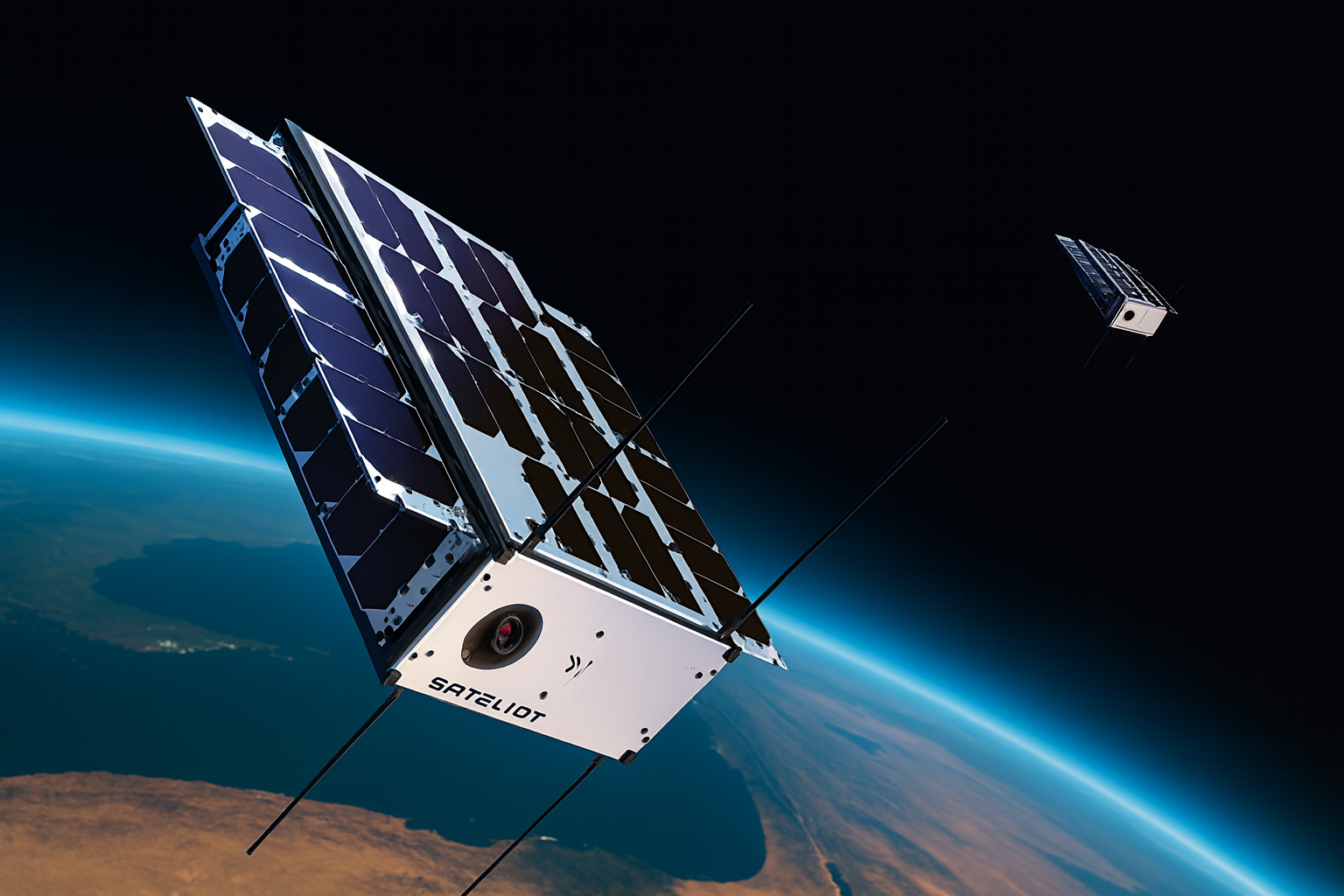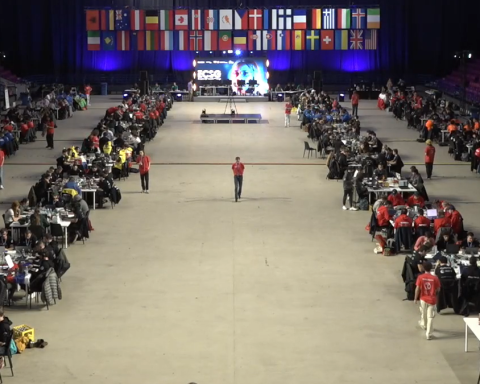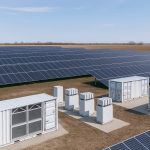- ESA + Telesat hit a world‑first 5G link to a fast‑moving LEO satellite using standardized 5G Non‑Terrestrial Network (NTN) tech—an inflection point for space‑enabled mobile coverage (23 Dec 2024). European Space Agency
- Eutelsat, Airbus and MediaTek ran the first 5G NTN trial over the OneWeb LEO network (24 Feb 2025), proving a 5G user terminal can connect through a satellite to a 5G core and exchange traffic. Reuters
- The EU’s IRIS² programme—~290 satellites, €10.6bn—was green‑lit and contracted (16 Dec 2024). Initial pooled government services via existing capacity start in 2025; EU‑owned infrastructure to deliver full governmental services by 2030. Defence Industry and Space
- Live “bonded” connectivity demo in July 2025 showed seamless switching between satellite and 5G while on the move (published 3 Sep 2025). European Space Agency
- Why now? Because 3GPP Release‑17 (June 2022) standardized 5G NTN—turning satellites into native parts of 5G networks. 3GPP
- Bands & devices: Early direct‑to‑device NTN uses L/S‑band (sub‑2 GHz) with Ka/Ku under study for future NR‑NTN; Europe’s recent trials exercised Ka/Ku‑band links. Cisco
- Who’s moving in Europe: Eutelsat/OneWeb, Airbus, MediaTek, Telesat, Amarisoft—and startups like OQ Technology (EU‑funded 5G D2D test) and Sateliot (5G NB‑IoT from space). Mobile World Live
- Temper expectations: This is the launch of the 5G‑from‑space era (live links and service pilots), not continent‑wide consumer 5G broadband yet. IRIS² targets services for governments by 2030, with commercial layers to follow. Defence Industry and Space
Europe just launched 5G via satellite—here’s what actually happened
Two back‑to‑back breakthroughs signal that Europe’s 5G‑from‑space era has truly begun. First, the European Space Agency (ESA) and Telesat made the first standard‑based 5G connection to a fast‑moving LEO satellite, validating 5G NTN in Ka‑band as the satellite arced across the sky. ESA’s Antonio Franchi summed up the moment: “We are proud to continue to drive European technological leadership…in Non‑Terrestrial Networks.” European Space Agency
The second milestone came 24 February 2025, when Eutelsat, Airbus and MediaTek completed the first 5G NTN connection over OneWeb’s LEO satellites. The team used a Release‑17 test chipset and gNB to attach a 5G user terminal to a 5G core over a satellite hop—exactly the kind of end‑to‑end architecture operators need. As Eutelsat’s Chief Engineering Officer Arlen Kassighian put it, “5G NTN will be a key feature of the IRIS² constellation.” MediaTek’s Mingxi Fan added that the orbit‑to‑ground link brings us “another step closer” to commercial, wideband NR‑NTN. Airbus’s Elodie Viau said the demo “opens the prospect of true global satellite broadband connectivity for 5G devices.” MediaTek
ESA also showcased how these pieces come together in the real world: a July 2025 live demonstration bonded Starlink and Vodafone 5G so a moving terminal kept a video call alive even when one link was deliberately cut. “Hybrid connectivity…on the move in remote conditions,” is how ESA framed the benefit. European Space Agency
Why Europe is doing this now: sovereignty, resiliency, and the standards finally exist
Brussels has made sovereign, secure connectivity a strategic priority. With IRIS²—a multi‑orbit constellation (~290 satellites)—the Commission says the contract signing is “a significant step towards Europe’s sovereignty and secure connectivity.” The plan phases in services, pooling member‑state capacity now and rolling out the EU‑owned system for government users by 2030. Defence Industry and Space
ESA’s Director General Josef Aschbacher has been explicit: “Independent access to secure, space‑enabled connectivity is essential for people in Europe.” ESA will help deliver the constellation and its ground segment with industry. European Space Agency
The other catalyst is technical: 3GPP Release‑17 finally standardized NTN (June 2022), so satellites can speak the same 5G language as towers. That includes NR‑NTN for phones and NB‑IoT/eMTC NTN for IoT. 3GPP
How 5G via satellite actually works (and what it won’t do on day one)
The big shift: Satellites become extensions of 5G networks, not bolt‑ons. That means a device can attach to a 5G core over space links using standardized waveforms and procedures—enabling roaming, authentication, and policy control the same way your phone does today (just with different link budgets and timing). 3GPP
Frequencies & devices:
- Direct‑to‑device (D2D) messaging and basic data will initially leverage sub‑2 GHz (L/S‑band) because the long wavelengths and existing antennas in phones are more forgiving from orbit. Ka/Ku‑band is being advanced for higher‑throughput NR‑NTN in future releases—and appeared in recent European trials. Cisco
- Performance: Early NR‑NTN can deliver tens of Mbps downlink (shared), with latency of a few tens of milliseconds depending on orbit and system design. Don’t expect fiber‑like speeds everywhere, but do expect coverage where there was none. 5G Americas
Bonded connectivity—like ESA’s July demo—will mix satellite and 5G/4G/Wi‑Fi dynamically, smoothing handoffs and hiding outages from apps. European Space Agency
Who’s building Europe’s 5G‑from‑space stack
- ESA is funding and orchestrating critical demos, labs (the 5G/6G Hub), and industry forums to accelerate NTN across 5G and into 6G. European Space Agency
- Eutelsat/OneWeb brought LEO capacity, Airbus the satellites, and MediaTek the NR‑NTN chipset in the February breakthrough. Sharp and Rohde & Schwarz provided RF/test gear; ITRI delivered the test gNB. MediaTek
- Telesat partnered with ESA on the December 2024 LEO 5G NTN first, using Amarisoft’s 5G stack. European Space Agency
- Startups: OQ Technology secured EU funding to test secure 5G D2D messaging to standard smartphones; Sateliot is courting European defence and IoT users with Release‑17 NB‑IoT from space. Mobile World Live
Europe vs. the rest: the standards‑first path
The US is racing with direct‑to‑cell pilots (e.g., Starlink messaging trials in Ukraine), but many of those start with LTE or proprietary approaches. Europe’s center of gravity is 3GPP‑standardized 5G NTN—so operators, vendors and regulators can reuse the 5G toolbox (spectrum policy, roaming, security) at scale. Reuters
Timelines: what to expect between now and 2030
- 2025–2026: More NR‑NTN field trials, aviation pilots (ESA + Seamless Air Alliance), and early D2D messaging pilots in Europe. Runway Girl
- 2025 onward: Member states pool capacity via GOVSATCOM while IRIS² builds; industry continues NR‑NTN chipset and handset integration. Defence Industry and Space
- Late decade: IRIS² completes deployment with commercial and governmental layers, targeting 2030 for full governmental services. Defence Industry and Space
Opportunities (and the fine print)
Coverage & resilience. Space‑augmented 5G brings lifelines to remote communities, transport corridors, energy and maritime, and disaster zones—and strengthens Europe’s digital sovereignty. As ESA’s Alberto Ginesi said, “This world‑first experiment demonstrates ESA’s technical excellence in advancing broadband satellite access.” European Space Agency
Device reality. Early services will prioritize messaging, IoT, and niche broadband. Widespread handset‑grade broadband over NR‑NTN needs more spectrum, more satellites, and more silicon in market. Cisco
Industrial execution. IRIS² is ambitious and politically charged; debates over cost and scope have surfaced (notably in Germany). Governance and procurement discipline will matter as much as radio physics. Advanced Television
Expert voices (quoted)
- “We are proud to continue to drive European technological leadership…in Non‑Terrestrial Networks.” —Antonio Franchi, ESA European Space Agency
- “This world‑first experiment demonstrates ESA’s technical excellence in advancing broadband satellite access.” —Alberto Ginesi, ESA European Space Agency
- “5G NTN will be a key feature of the IRIS² constellation.” —Arlen Kassighian, Eutelsat MediaTek
- “By making real‑world connections with LEO satellites…we are another step closer” to commercial NR‑NTN wideband. —Mingxi Fan, MediaTek MediaTek
- “[This] opens the prospect of true global satellite broadband connectivity for 5G devices.” —Elodie Viau, Airbus MediaTek
- “Independent access to secure, space‑enabled connectivity is essential for people in Europe.” —Josef Aschbacher, ESA Director General European Space Agency
Bottom line
Europe has launched 5G from space—not as a marketing slogan, but as live, standards‑based links that fuse satellites into the 5G fabric. The demos are real, the IRIS² pathway is locked in, and the ecosystem—from primes to startups—is moving. Coverage maps won’t flip overnight, but dead zones just got a credible exit strategy. European Space Agency
Sources (selected)
- ESA: World‑first direct 5G connection to a LEO satellite; Live demonstration of satellite‑5G bonding; ESA on IRIS² role. European Space Agency Agency
- Eutelsat/MediaTek/MediaTekpress: 5G NTN over OneWeb LEO (quotes & setup). MediaTek
- Reuters: Eutelsat’s 5G NTN trial; EU’s IRIS² contracting; Ukraine D2D tests (context). Reuters
- European Commission/DEFIS: IRIS² facts, schedule, sovereignty framing. Defence Industry and Space
- 3GPP/ETSI: Release‑17 NTN standardization. 3GPP
- Cisco white paper: NTN bands & device landscape. Cisco
- Mobile World Live: OQ Technology EU‑funded 5G D2D pilot. Mobile World Live
- Advanced‑Television: IRIS² cost/industrial debate (Germany). Advanced Television












